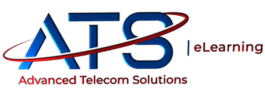Writing In Plain Language
You are not yet enrolled in this course.
- Define plain language and describe why you should want to write in plain language
- Describe your reader’s needs, taking into account state-specific literacy
- Organize your content in a way that makes it most likely to be read, understood, and acted on
- Write shorter sentences and paragraphs to serve your reader’s needs
- Choose your words wisely for both readability, consistency, and relevance to your audience
- Format your content appropriately to emphasize important points
- Use bulleted lists the right way
Write emails and documents that are read, understood, and acted on
We are overwhelmed with information today—in both our personal and business lives. Sometimes it’s better to get straight to the point, in a way that doesn’t waste your reader’s time yet doesn’t compromise your professionalism either. This course teaches you how to use plain language to address your reader’s needs.
What do they really need to know?
What do you want them to do?
We’ll teach you how to think about your reader’s purpose and how to write for them so they get the right message.
Topics covered include:
- Understanding state-specific literacy
- Organizing your content
- Writing short sentences and paragraphs
- Choosing your words wisely
- Formatting appropriately
- Using bulleted lists the right way
